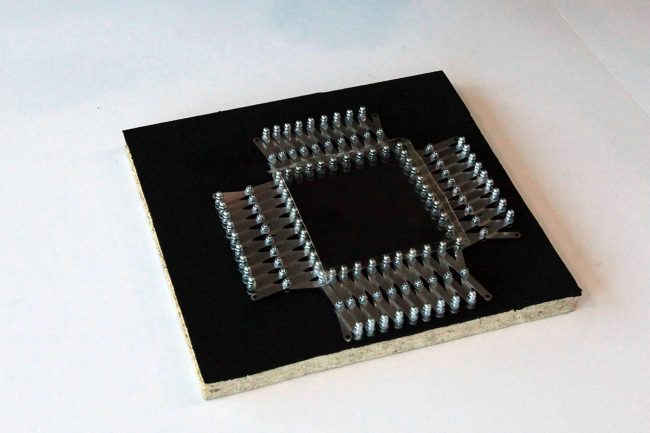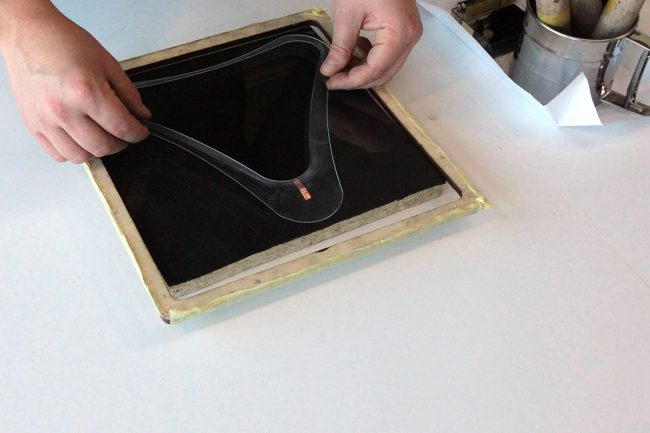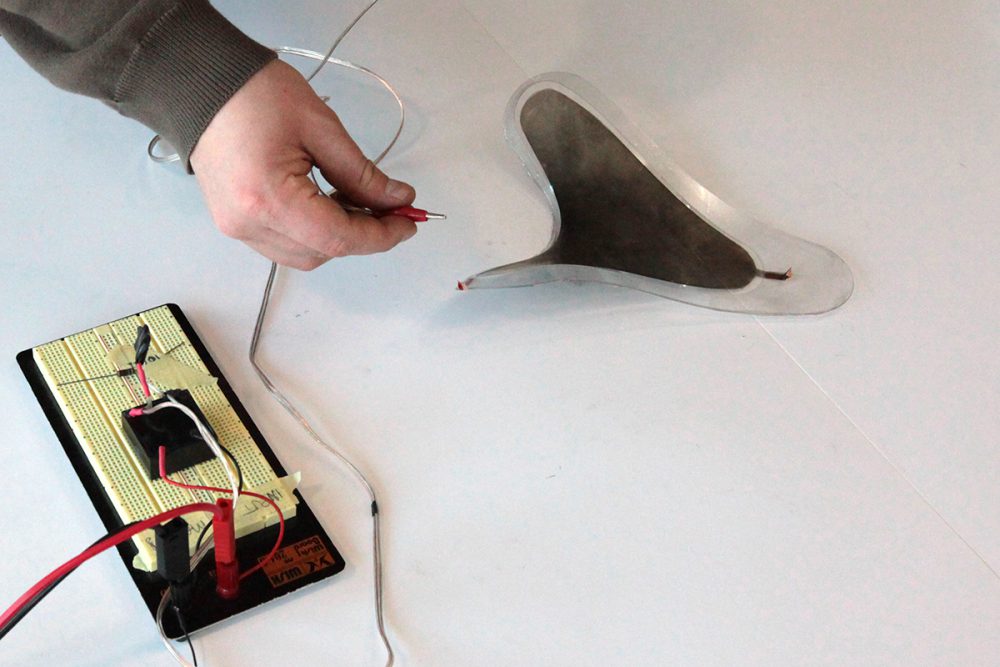making membranes that move
This tutorial was made possible through the extensive research into EAP technology at the Swiss Federal Laboratories for Materials Science and Technology (EMPA) and with the Interaction Design at Zurich University of the Arts, and their kind support in sharing materials, tools, facilities and knowledge.
Materials and Tools
|
|
1. Design Shape
Design desired frame shape on Computer using a graphical program. Rhombic shapes work nice for starters. Cut out frame with a laser cutter. Cut out paper stencil with laser cutter. The stencil should have an internal offset of about 5mm smaller than the plastic frame. There’s a large set of variables which determine whether and how the shape will be moving
- Size of Frame Shape / Also determined by the maximum area that can be stretched
- Frame Border thickness
- Frame Material thickness / Usually a thickness between 0.5 – 1mm worked best
- Type of Frame Material / From experience many plastic sheet materials work nicely. Very good results were achieved with Acrylic, Polystyrene and Lexan
- Amount of Pre-stretch / This tutorial uses a 3×3 ratio but better results can be achieved with a larger stretch
The whole process is very much based on trial and error and empirical development of a “perfect” shape
2. Prepare Work Area
Clean your surface. Place Rubberpad, knife, ruler and elastomeric membrane on your surface<
3. Cut Membrane
Cut off a piece of membrane that fits exactly onto your pre-stretching mechanism.
4. Reinforce Borders
Add small strips of membrane to the borders in order to reinforce their strength.
5. Stretch Membrane
Close stretching Mechanism. Fix membrane onto Mechanism. Make sure all borders are attached thoroughly. Stretch elastomeric membrane. The stretch-ratio will affect the later movement.
6. Maintain Prestretch
Place stretched membrane above static wooden frame. Fix stretched membrane to static frame with tape. Fold excess tape around the corners in order to keep membrane in place.
7. Apply Conductive Powder
Place stencil foil onto Membrane. Apply conductive powder onto Membrane. Rub the powder firmly but smooth into the material. Once one side is done, remove the stencil and repeat the procedure on the other side. Make sure to print small lines onto each side for the connectors. They should sit on different positions, not opposite each other.
8. Add Connector
Cut a small piece of conductive tape or aluminum foil. Attach connector to previously marked lines on both sides of the membrane.
9. Apply Plastic Frame
Firmly press the plastic frame onto the membrane. Make sure that it is attached on all sides equally. Then cut out frame with knife. The frame will relax and take on its relaxed shape.
10. Apply power
Connect electrodes to 5000V (5kV) Power Converter.
11. Final dos and dont’s
- keep a 2mm offset in between the carbon powdered area and the plastic frame
- never extend the copper tape inside the frame
- do not have anything rigid, or sharp touching the active area
- make sure the rubber board is free of dust
- keep the membrane dust free
- try to spread the carbon in a thin layer and as evenly as possible
- first powder both sides of the vhb foil, then apply the copper and plastic frame and then the copper on the other side
- press the frames on the the vhb foil, either with your fingers or by rolling over with an unsticky tape before you start removing the frame of the board
- make sure to leave enough space around your design when placing it on the wooden frame
12. Additional Information


























